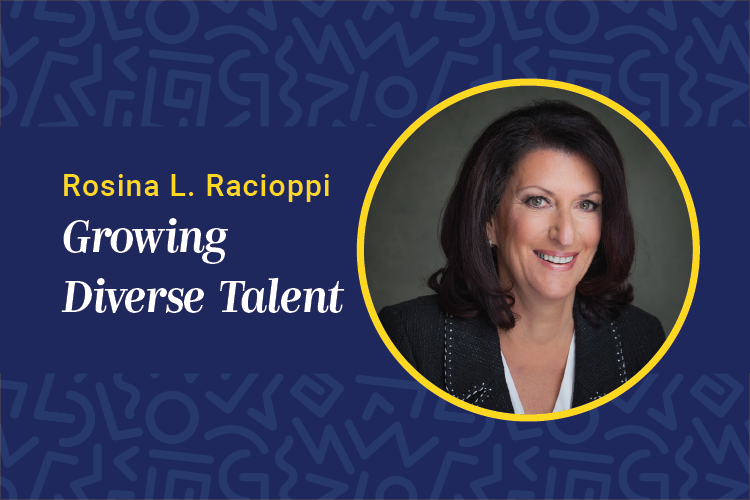
Achieving gender parity is a slow, arduous process. There is as much to be undone as there is to be done.
by Dr. Rosina L. Racioppi
April 30, 2020
 In my interactions with people across the diversity and inclusion spectrum, I often hear their frustration and discouragement. “I’m tired.” “Not enough results for the effort expended.” “Why haven’t we gotten further along after all this time?” From managers to D&I officers to CLOs to CEOs, there is a desire to see gender parity take hold faster.
In my interactions with people across the diversity and inclusion spectrum, I often hear their frustration and discouragement. “I’m tired.” “Not enough results for the effort expended.” “Why haven’t we gotten further along after all this time?” From managers to D&I officers to CLOs to CEOs, there is a desire to see gender parity take hold faster.
In the well-intentioned hope of speeding up results, efforts are frequently focused on initiatives rather than the bigger picture. For example, organizations frequently view success as simply increasing the number of women in visible roles, failing to go deep in creating a vibrant pipeline of talented women. That’s a major part of the problem. Achieving sustainable gender parity is a journey, not a single initiative.
The key impediment to organizationwide diversity and inclusion is systemic and rooted in a century-old, male-focused culture that remains solidly imbedded in most companies, sometimes obviously and sometimes subtly. Changing that deeply ingrained culture will not happen through narrowly targeted initiatives. To achieve the needed shifts in organizational culture, corporations must begin with an honest, corporatewide examination of behaviors and how they can be changed. It’s a journey that calls for patience, perseverance and partnerships.
So, what are the benchmarks of a successful journey to achieving gender parity?
First, benchmark organizations have defined pathways for populating the entire organization with diverse talent. It’s not just about more women CEOs or corporate leaders. It’s about having talented women in place at every level. It’s about hiring, advancing, developing and retaining them.
In these organizations, managers suspend judgment and assess head-on the behaviors, habits and attitudes that create barriers to women advancing. They offer more stretch assignments to women, identify opportunities for women to have profit and loss responsibilities and provide frank, career-advancing feedback, not just in annual reviews, but throughout the year.
Women in benchmark organizations are willing to initiate conversations with managers, mentors and sponsors about organizational structures and attitudes they see impeding their advancement. They become vocal advocates for their own success and speak out about the avenues to career fulfillment they would like to pursue.
Finally, these organizations have metrics in place across all levels that evaluate and monitor what’s working and what’s not. Then they reevaluate their efforts accordingly. The journey will have its ups and downs, with no one path working for everyone. However, unless results are measured, mistakes will be repeated and opportunities missed.
Through my work at WOMEN Unlimited, I’ve found that as organizations embrace this journey, changes begin to happen. They are often not the changes you find on a flow chart. They are subtle shifts in attitudes and behaviors that catch on and begin to create a ripple effect of success. In time, patience, perseverance and partnerships start to pay off. We see more women with P&L responsibility early in their careers, more women representing their organizations at industry events, and more women, slowly but consistently, entering the talent pipeline for advancement to middle- and top-level positions.
It’s important to note that sustainable gender parity does not allow for bypassing shifts in organizational culture. Fortunately, there are organizations in place to help corporations identify where the shifts are needed and the best practices for making them happen. WOMEN Unlimited has partnered with three of them: the Women’s Business Collaborative, Paradigm for Parity and Catalyst. Bringing together individuals committed to gender parity from a cross section of industries, these organizations:
- Shine a spotlight on strategies that work.
- Inform and educate managers at all levels about the signs and dangers of unconscious bias.
- Share empirical and anecdotal research findings.
- Advocate for full partnerships of men and women leaders.
- Provide proven approaches to measuring and monitoring progress.
If the journey to gender parity were an easy one, we would be at our destination already. However, it is a slow, arduous process because there is as much to be undone as there is to be done. As shifts in attitude and culture continue to take hold, the frustration of efforts outweighing results will also shift.



